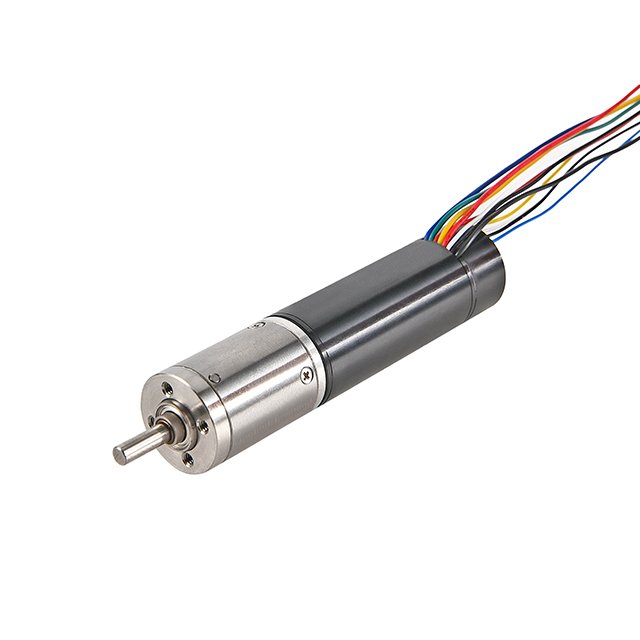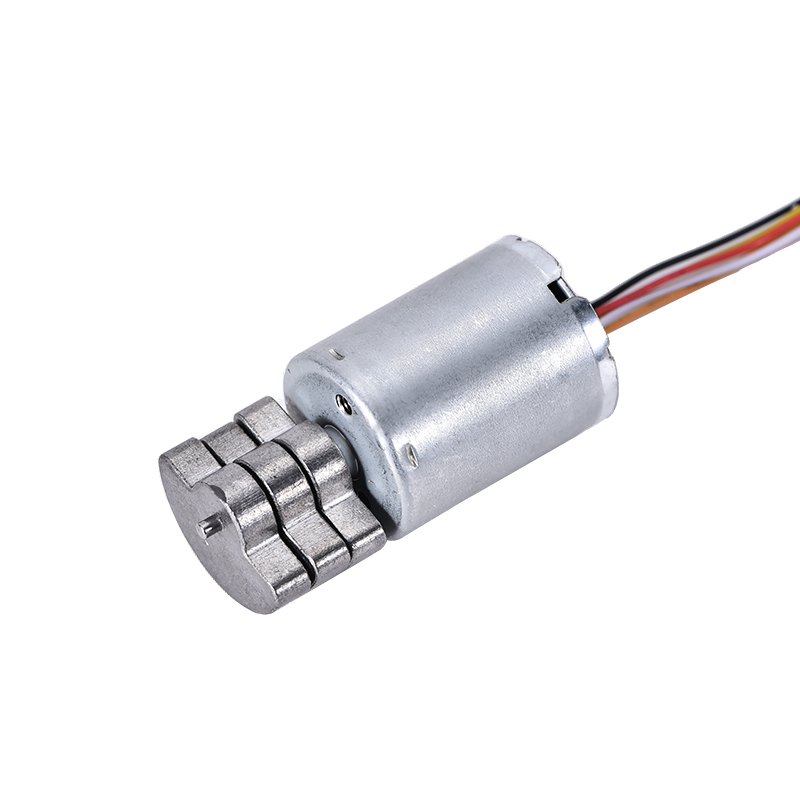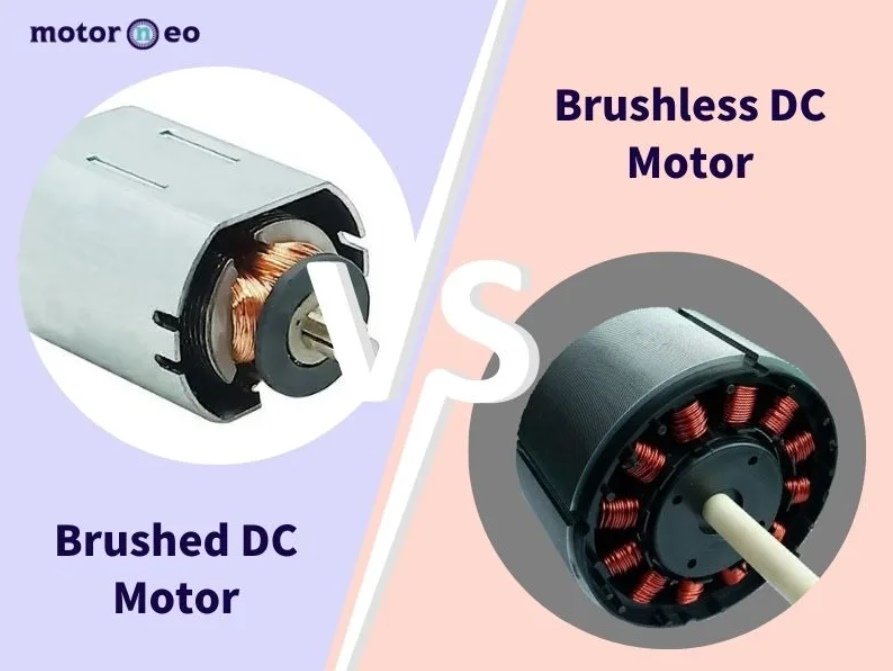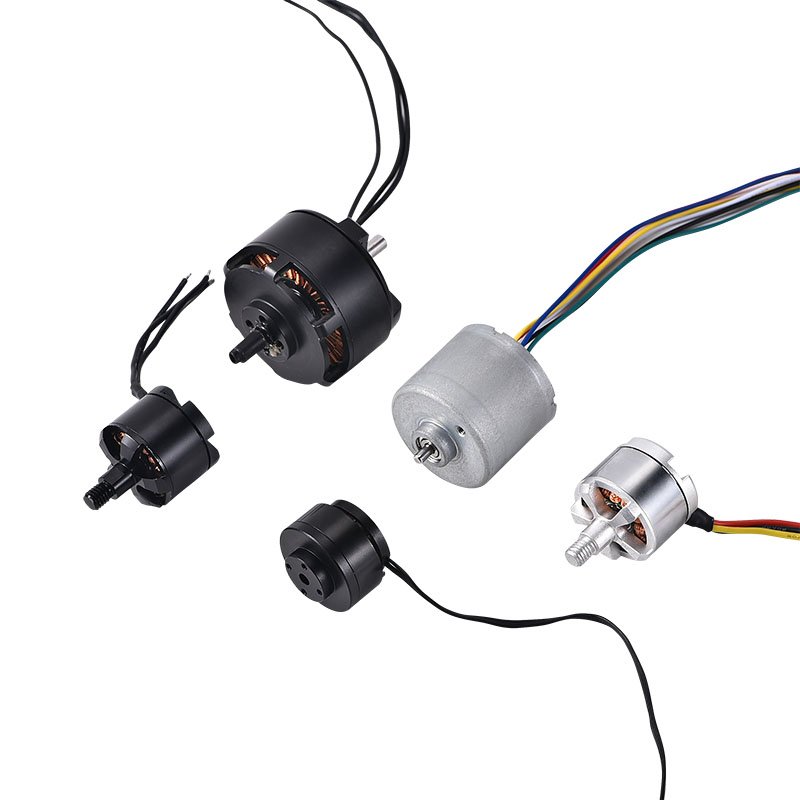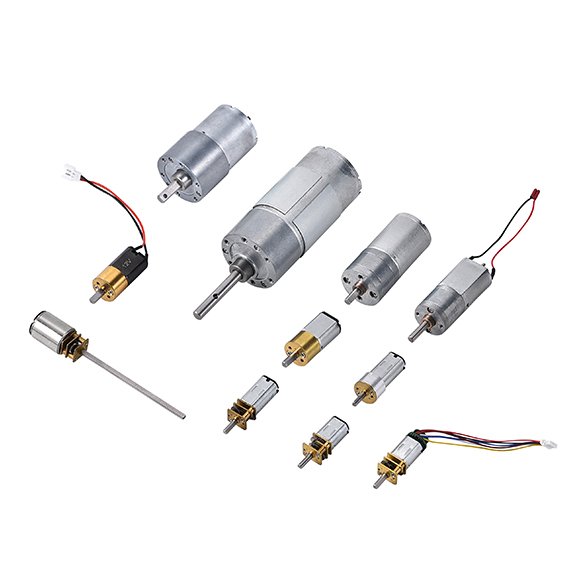Imagine you’re building a new gadget or designing a smart device. You reach the point where you need to pick a motor, but the choices seem endless. To choose the right small brushless motors, you just need to match the motor’s specs to your project’s needs. The right motor boosts your project’s performance and keeps it running smoothly for years. Take a look at how the right choice impacts your results:
Benefit | Description |
|---|---|
High Efficiency | Save energy and lower long-term costs. |
Long Lifespan | Enjoy durability with minimal maintenance. |
Enhanced Performance | Get precise control and smooth, quiet operation. |
You don’t have to figure this out alone—INEED offers a wide range of customizable options for nearly any application.
Key Takeaways
Identify your project’s specific needs before selecting a motor. Consider factors like application type, weight, and space limitations.
Match the motor’s voltage and current ratings to your power supply. This ensures smooth operation and prevents overheating.
Choose between inrunner and outrunner motors based on your torque and efficiency needs. Outrunners provide more torque, while inrunners are more efficient.
Use INEED’s product data sheets to compare motor specifications easily. This helps you find the best fit for your project.
Avoid common mistakes like ignoring environmental factors and motor specs. Careful planning leads to better performance and longer motor life.
Identify Project Needs
Application and Goals
Before you pick a motor, think about what you want your project to do. Are you building a drone, a robot, or maybe a smart home device? Each project has its own needs. For example, a drone needs a lightweight motor with high speed, while a robot arm might need more torque for lifting. Take a look at some common uses for small brushless motors:
Industry/Application | Examples |
|---|---|
Aerospace and aviation | Drones, aircraft actuators |
Automotive | Electric vehicles, power steering systems |
Industrial automation | Robotics, CNC machines, AGVs, packaging lines |
Building Automation | Access gates |
Agriculture | Farming robots, seeders |
Consumer electronics | Computer fans, hard disk drives |
Renewable energy | Wind turbines, solar tracking systems |
You’ll find brushless motors in everything from electric skateboards to medical devices. Their popularity keeps growing because they’re efficient and reliable.
Weight and Space Limits
Now, let’s talk about size. Many projects, especially in consumer electronics and robotics, need motors that fit into tight spaces. You might need a motor as small as 22mm in diameter and weighing less than 100 grams. Miniaturization is a big trend, so always check the space you have available. If your project needs quiet operation, slotless motors work well. For more rugged jobs, slotted motors give you extra torque.
Tip: Always measure your available space before choosing a motor. A compact brushless motor can save you time and money during assembly.
Performance Requirements
Performance matters just as much as size. You should look at voltage, current, speed, and torque. These numbers tell you how much power your motor can deliver and how fast it can spin. Efficiency is key—an efficient brushless motor saves energy and keeps your device cool. Don’t forget to consider the environment. Will your project face high temperatures or humidity? Make sure your motor can handle those conditions.
Voltage and current
Speed and torque
Efficiency and power use
Environmental factors like temperature and humidity
When you match your project’s needs with the right motor specs, you set yourself up for success.
Small Brushless Motors: Types and Options
When you start looking for small brushless motors, you want a supplier you can trust. INEED stands out as a reliable partner, offering a wide range of small brushless motors and gear motors for all kinds of projects. Whether you need something for a medical device, a smart home gadget, or an industrial tool, you’ll find options that fit your needs.
Inrunner vs Outrunner
You’ll often see two main types of small brushless motors: inrunner and outrunner. Each type has its own strengths. Here’s a quick comparison to help you decide which one matches your project’s thrust and speed needs:
Motor Type | Torque Characteristics | Efficiency Characteristics |
|---|---|---|
Outrunner | Produces more torque due to lower speed. | Less efficient due to higher inertia. |
Inrunner | Produces less torque compared to outrunners. | More efficient due to lower inertia. |
If your project needs more torque at lower speed, like in drones or robotics, an outrunner might be the way to go. For higher efficiency and applications where you want less heat and more power, inrunners are a solid choice.
INEED Brushless Gear Motors
INEED’s brushless gear motors bring several unique features to the table:
High efficiency for longer battery life
Low noise operation, even under 30dB
Advanced magnetic technology for smooth performance
You’ll also find these motors powering dental handpieces, surgical drills, ventilators, and prosthetics. They work quietly and reliably, which is especially important in healthcare and precision equipment.
Typical Uses
Small brushless motors show up in many industries. In medical devices, you’ll see them in insulin pumps, prosthetics, wearable gadgets, and dental drills. In drones, they handle mapping, racing, farming, and delivery tasks. These motors can last up to 10,000 hours and run whisper-silent, making them safe for sensitive equipment.
If you need a specific model, INEED offers options like the 12 Volt Worm Gear Motor N30 for home appliances, the Micro Brushless Motor for smart locks, and the 16mm Planetary Gear Motor for cleaning equipment and personal care devices. You get reliable power, long life, and the right speed for your application.
Brushless Motor Specs

Power and Thrust
When you choose a small brushless motor, you want to know how much power it can deliver and how much thrust it can generate. Power tells you how much work the motor can do, while thrust is the force that moves your project—like lifting a drone or pushing a robot forward. If you pick a motor with too little power, your device might struggle to move or lift anything. Too much power can waste energy and create extra heat.
Here’s a quick look at the typical power output for small brushless motors:
Motor Type | Power Output Range |
|---|---|
Small Brushless Motor | 0.5 … 600 W |
Larger Brushless RC Motors | Upwards of 10 kW |
Most small brushless motors you’ll use in robotics or drones fall between 90 W and 480 W. Some models go as low as 20 W or as high as 600 W. You should match the power and thrust to your project’s weight and performance needs. For example, a lightweight drone needs less thrust than a heavy-duty robot. If you want your project to last, remember that small brushless motors can run for 10,000 to 25,000 hours with proper care.
Tip: Always check your project’s weight and the amount of thrust you need before picking a motor. This helps you avoid overloading or underpowering your device.
Voltage and Current
Voltage and current ratings play a big role in how your brushless motor performs. Voltage controls the speed, while current affects the torque and overall power. If you use the right voltage, your motor will run smoothly and last longer. Too much voltage can cause overheating or even permanent damage. Too little voltage means weak thrust and poor performance.
Stay within the recommended voltage range for the best results.
Higher voltage lets your motor spin faster, giving you more speed.
Enough voltage ensures steady current flow, so you get consistent thrust.
Running at the right voltage keeps your motor cool and efficient.
If you push your motor past its limits, you risk insulation breakdown or failure. On the other hand, using less than the rated voltage can make your motor sluggish. Environmental factors like dust, moisture, or chemicals can also affect performance. Dust can break down insulation, moisture can corrode parts, and chemicals can damage materials.
Impact on Performance | |
|---|---|
Dust and dirt accumulation | Causes insulation breakdown |
Moisture ingress | Leads to corrosion of windings and bearings |
Chemical exposure | Degrades insulation materials |
Keep your motor clean and dry for the best results. When you match voltage, current, and environmental protection, your brushless motor will deliver reliable power and thrust for years.
Match Specs to Your Project
Choosing the right motor can feel overwhelming, but you can break it down into simple steps. Let’s walk through how you can match your project’s needs to the perfect motor, using INEED’s resources and real-world examples.
Step-by-Step Selection
Start by listing out what your project needs. Think about the load, the environment, and how much space you have. Here’s a quick checklist to help you get started:
Figure out the power your project needs. Make sure the motor can handle the load.
Decide on the speed. Pick a motor that spins fast enough for your application.
Check voltage compatibility. Match the motor’s voltage to your device to avoid overheating.
Look at torque. You want enough torque for stability and smooth operation.
Consider noise. If your project runs in a quiet place, choose a motor with low noise levels.
Measure the size. Make sure the motor fits your design.
You can use this table to compare the main specs you’ll need:
Specification | Details |
|---|---|
Power | Ranges from 500W to 1.8kW, suitable for light to heavy loads. |
Speed | Ideal speed is around 4000 rpm for most applications. |
Voltage Compatibility | Typically ranges from 24V to 48V, depending on device requirements. |
Torque | Recommended range is between 1.5 and 4 Nm for stability. |
Noise Impact | Important for environments like medical or office settings, ideally below 40 dB. |
Tip: Always double-check your project’s requirements before you order. This helps you avoid costly mistakes and keeps your project running smoothly.
Using INEED Product Data
INEED makes it easy to compare different models. Their product data sheets give you all the details you need, like power, speed, torque, and noise levels. You can quickly see which motor matches your project best.
Here’s a quick look at how brushless motors stack up against brushed motors:
Feature | Brushed Motors | Brushless Motors (BLDC) |
|---|---|---|
Efficiency | Lower | Higher |
Speed and Acceleration | Slower | Faster |
Noise Levels | Louder | Quieter |
Maintenance | Frequent | Minimal |
Lifetime | Shorter | Longer |
When you look at INEED’s data sheets, focus on torque and speed. High torque means your motor can handle heavier loads. Fast speed helps your project move quickly and efficiently. Brushless motors also use less energy and last longer, which saves you money over time.
If you ever feel stuck, you can reach out to INEED’s technical support team. They can help you pick the right motor or answer any questions about specs. You’ll also find helpful guides and resources on their website.
Real-World Examples
Let’s see how others have matched specs to their projects:
Key Factor | Explanation |
|---|---|
Duty Cycle | Match the motor’s duty cycle to your project to avoid problems and keep it working longer. |
Environmental Factors | The environment affects how long and well a motor works. Motors in tough places need extra protection. |
Application Requirements | For projects needing accuracy and durability, pick brushless motors. |
Efficiency | Choosing an efficient motor means better performance and longer use. |
For example, a company building a smart pool cleaner needed a motor with high torque and low noise. They chose a brushless gear motor from INEED that could handle heavy debris and run quietly. Another team designing a dental handpiece picked a compact brushless motor for its small size and smooth, quiet operation. Both teams checked the power, speed, and thrust to make sure the motor fit their needs.
You can follow the same process. List your requirements, compare specs, and use INEED’s support if you need help. This way, you’ll find a small brushless motor that fits your project perfectly and keeps it running strong.
Compatibility and Tips
ESC and Power Packs
Getting your small brushless motor to work smoothly means you need the right electronic speed controller (ESC) and power pack. If you mismatch these parts, you might run into problems like overheating or signal loss. Here are some things you should watch for:
Make sure your ESC has a higher current rating than your motor’s maximum current. This helps prevent overheating.
Check all connections and keep your firmware updated to avoid signal loss.
If your motor and ESC don’t seem to work together, try resetting the throttle endpoints to fix calibration issues.
Always match the battery voltage and current rating with your ESC and motor. Using a higher voltage than recommended can damage your motor or ESC.
Use quality batteries to avoid voltage drops and overheating.
Pick the right battery pack for your motor size. For example, 540 sized motors work best with 2S LiPo packs, while small wind motors use 1S packs.
Keep wiring short and thick to reduce resistance and power loss.
Note: Good wiring and battery choices help your motor run at the right speed and keep your project safe.
Common Mistakes
You want your project to succeed, so avoid these frequent mistakes:
Ignoring motor specs like voltage, current, and torque can lead to poor performance or even failure.
Not thinking about the operating environment, such as temperature and humidity, can shorten your motor’s life.
Failing to match the motor’s abilities with your project’s needs can compromise your results.
Quick Tips
Here are some quick tips to help you get the most out of your small brushless motor:
Match the gear ratio to your motor’s specs to avoid sluggish movement or excessive speed.
Choose high-quality materials for gears to boost durability.
Make sure everything is aligned and installed properly to prevent friction and early breakdown.
Tip: Careful planning and attention to detail make your motor last longer and perform better.
Choosing the right small brushless motor gets easier when you follow a clear process:
Match voltage and current to your power supply.
Check size and weight limits.
Pick the best gear ratio and output shaft.
Consider the environment.
Focus on efficiency and heat control.
Decide on control and feedback options.
When you match specs to your project, you get better performance, energy savings, and a longer-lasting device. INEED offers custom solutions to fit your needs:
Customization Option | Impact on Performance |
|---|---|
Adjust torque | Tailors output for your application |
Set custom speed levels | Optimizes for different uses |
Tailor voltage | Ensures power compatibility |
Change dimensions | Fits your device perfectly |
Design internal structures | Enhances unique functions |
Select technical parameters | Optimizes overall performance |
Add or modify encoders | Improves precision and control |
Choose custom accessories | Expands what your motor can do |
If you need help or want to try a free sample, reach out to INEED’s team. You’ll find support every step of the way.
FAQ
What is the main advantage of a brushless motor over a brushed motor?
You get higher efficiency, longer lifespan, and quieter operation with a brushless motor. You also spend less time on maintenance because there are no brushes to wear out.
How do I know if a brushless motor fits my quadcopter?
Check your quadcopter’s weight and size. Make sure the motor’s thrust and motor speed match your flight needs. Always review the manufacturer’s recommendations for the best fit.
Can I control the motor speed easily?
Yes! You can use an electronic speed controller (ESC) to adjust motor speed. This gives you smooth acceleration and precise control for your project.
What should I do if my motor gets hot?
Stop your device and let it cool down. Check for dust or blockages. Make sure you use the correct voltage and current. If the problem continues, contact technical support.
Can I customize a brushless motor for my project?
Absolutely! You can work with INEED to adjust torque, speed, voltage, and even the size. Custom options help you get the perfect fit for your application.

